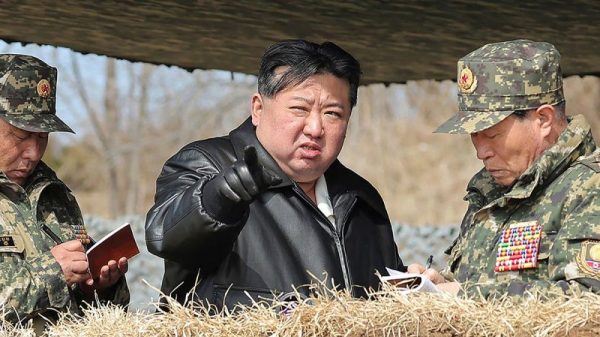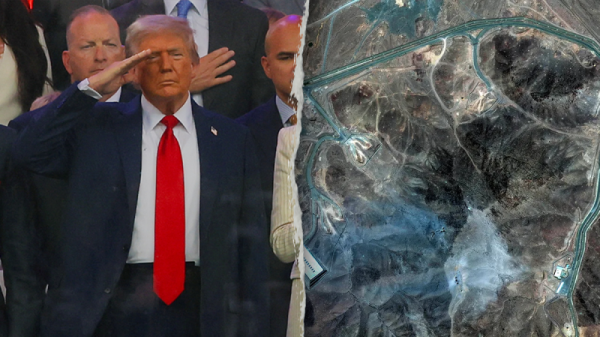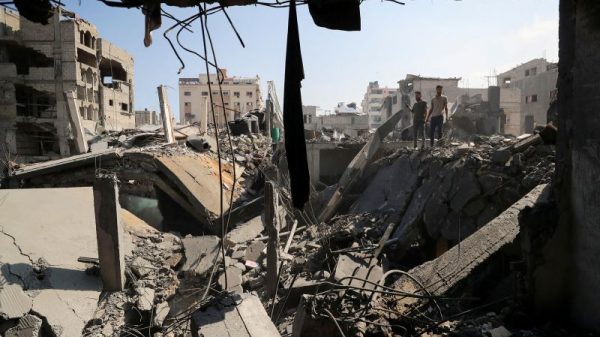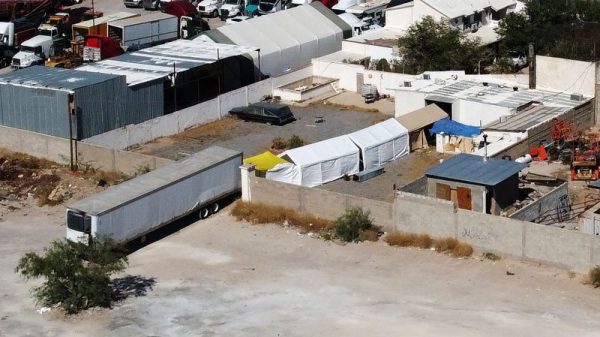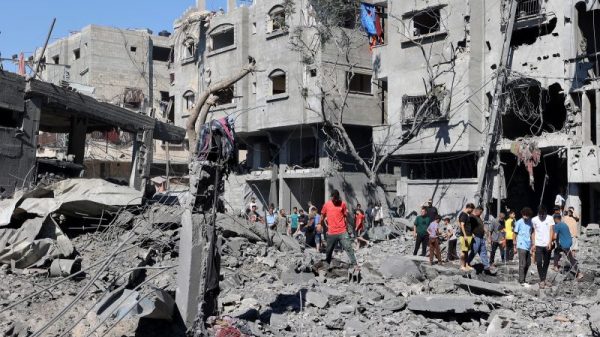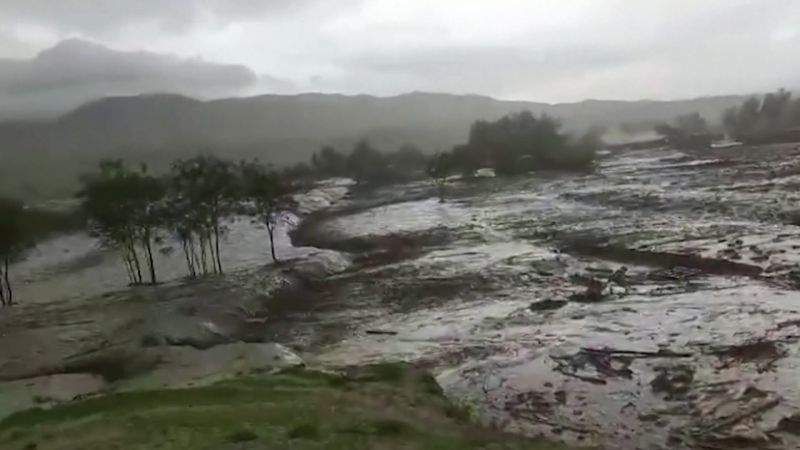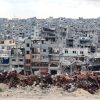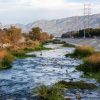Three bewildered children sit on the roof of a mosque in Baghlan province, northern Afghanistan, their eyes blinking away mud that covers their entire bodies.
Beside them, a rescuer lowers their baby brother, 2-year-old Arian, to the rooftop, a sheet tied around his waist that was used to pull him from the raging floodwaters below.
“Take it, let’s get take off the rope from his body,” the rescuer says on the video. “Bring his mother to hold him in her arms and be warm.”
In the past few days, at least 300 people have been killed in flooding in 18 districts across at least three provinces in northern Afghanistan, according to the United Nations’ World Food Programme (WFP), with at least 200 injured.
Videos show raging torrents of mud washing away mud houses – and people, their limbs flailing, in the fast-moving brown current, as would-be rescuers watch from higher ground, beyond reach.
The rescued children, ages 3, 5 and 6, were among eight siblings who were at home with their parents in Folo, in the Bulka district of Baghlan, when the flooding hit.
“Visibility was so poor that we couldn’t even see each other,” he said.
Then the rain started falling gently during Friday prayers – an unusual event for locals, who say it doesn’t rain very often so high in the mountain region, home to around 10,000 people, he added.
As the rain got heavier, suddenly the situation “turned dire.”
“People fled to higher ground, seeking refuge in mountains and hills. Unfortunately, some individuals who were unable to leave their homes fell victim to the floodwaters,” he said.
Aerial photos show belongings piled in plastic bags on rooftops, among them the hooded figures of women forced to cover their entire bodies even in times of disaster.
“Women who were rescued are forced to wear mud-soaked garments, while even infants as young as 2 to 3 months old are clothed in similarly soiled attire,” Barakatullah said.
In Folo, more than 100 people are believed to have been killed, he said – mostly women and children.
Some burials began over the weekend, but many more are already believed to be buried deep beneath mud.
From drought and hunger to flooding
The torrent swept away animals and farmland in an area already facing severe food shortages, according to Timothy Anderson, head of the WFP in Afghanistan.
He said the areas hit by floods had already been marked vulnerable to starvation after a difficult summer when searing heat brought drought.
Most years, locals expect to see flash flooding, he said. But this year, it’s been far worse.
The loss of the homes and their land is devastating for survivors, who were already among some of the country’s most impoverished people, Anderson said.
“When people lose a bit of livestock, that’s actually their livelihood,” he said.
Road access to the worst affected areas has been cut by floodwaters, forcing the WFP to use donkeys to send in supplies.
Within the first day, the WFP had distributed high energy biscuits and food for children. They’re also supporting local bakeries to supply free bread. In the next days, teams will start distributing food to feed families for a month – what happens next is unclear.
Anderson said 17 joint assessment teams are being sent to the area, along with other UN partners. He said it’ll take four or five days for the teams to properly examine the impact of the floods on people, and their housing and infrastructure.
‘Bearing the brunt’ of climate crisis
This latest natural disaster comes after drought in Afghanistan, and is being seen as an example of a climate crisis hitting those who have least contributed to rising global temperatures.
“They’re not net emitters of carbon,” said Anderson of the WFP. “This is a subsistence agriculture community and society. So, they’re bearing the brunt of it, without having necessarily contributed to the issue very much.”
He said during the recent dry months, efforts had been made to help the community capture rainfall in dams and irrigation canals to sustain crops. Now those efforts have been washed away, posing another challenge.
“The need is massive, not just in Afghanistan. The world is seeing the impacts of much larger, more severe events, whether that’s drought, rainfalls cyclones,” Anderson said.
Richard Bennett, the UN’s special rapporteur on human rights in Afghanistan said the recent floods “are a stark reminder of Afghanistan’s vulnerability to the climate crisis.”
And in a statement Sunday, Teresa Anderson, the Global Climate Justice Lead at ActionAid International, said: “The climate crisis continues to rear its ugly head.”
“With the latest incident, Afghanistan joins a long list of Global South countries grappling with floods this year,” she said.











